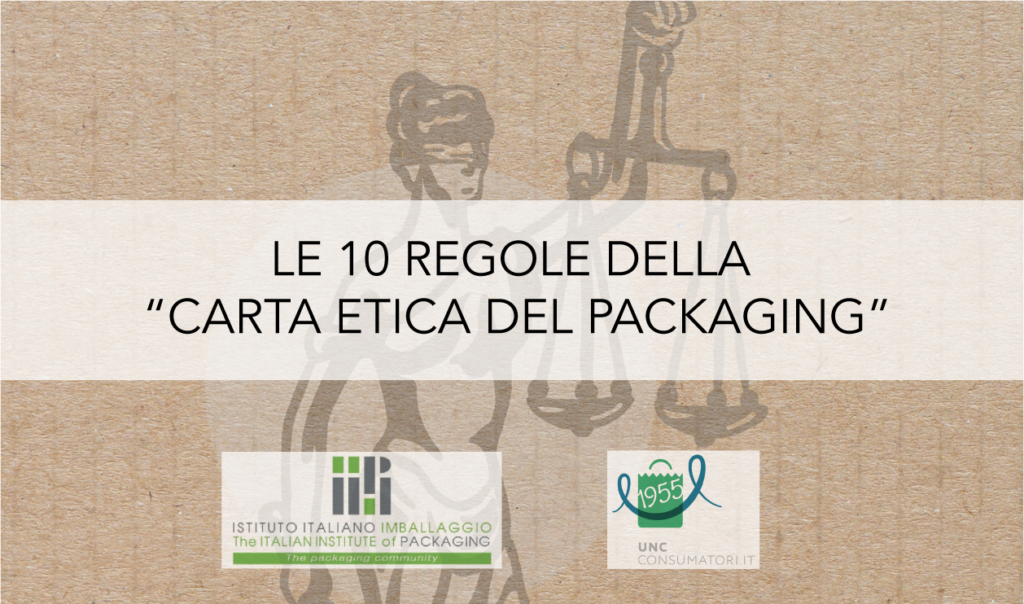The packaging ethics charter is a collection of principles designed to provide useful information for designing, producing and using packaging in a conscious way. It represents a kind of ideal contract between the actors in the system (from designers to manufacturers to end users) so that they commit to share common principles. Following are the 10 rules.
1. RESPONSIBLE PACKAGING
Packaging has an impact on an entire community, and for this reason it has a social responsibility, and it is this principle that designers must be aware of when they are designing packaging.
2. BALANCED PACKAGING
Balanced packaging must not be oversized in either communication or structural aspects: it must fulfill its function of containment and transportation, it must not overstate the promise made to the consumer, and it must not have an excess of information that distracts the buyer.
3. SAFE PACKAGING
Packaging must give users all the information about its traceability, the production chain, and, in addition, ensure hygiene and protection not only during transport but throughout the product’s life.
4. ACCESSIBLE PACKAGING
The packaging must ensure that the product is accessible to even the weakest individuals regardless of the users’ sensory abilities. Packaging should be designed to facilitate communication with these users as well; it should be simple, intuitive, and encourage product use and consumption.
5. TRANSPARENT PACKAGING
Packaging should communicate truthfully, directly, understandably, and without distortion or deception. Only in this way can an immediate and lasting relationship with buyers be built, minimizing the risk of misinterpretation.
6. INFORMATIONAL PACKAGING
The packaging, as prescribed in the regulations, must contain all information relevant to knowledge of the contents and its packaging, their use and disposal. For example, the label placed on packaging should inform about the nutritional values and preparation of a food, or how to use and store a product.
7. CONTEMPORARY PACKAGING
Packaging reflects the culture of society and in turn contributes to its creation. Packaging also communicates models of food, models of luxury, models of social life: therefore, it must and can prevent the spread of those stereotypes that in whatever form are obstacles to a just society.
8. FORWARD-LOOKING PACKAGING
Packaging development must involve a constant commitment to research and innovation. It must also be able to rethink itself for the users of tomorrow.
9. EDUCATIONAL PACKAGING
Packaging must exercise an educational function by inducing with its messages to virtuous behavior, increasing user knowledge and skills on issues from time to time recognized as priorities, or real emergencies. It should indicate how to take action to dispose of, recycle, or reuse the packaging or how to reduce waste.
10. SUSTAINABLE PACKAGING
Sustainable packaging is designed, manufactured, transported and recycled using renewable energy and clean energy wherever possible and is effectively recovered after use. Packaging to call itself environmentally friendly must be achieved with the least consumption of resources and energy. It must be designed and manufactured according to a recyclability principle and is based on recycled materials as a priority.
Sources: “My Friend Packaging” by Unione Nazionale Consumatori and Istituto Italiano Imballaggio.

